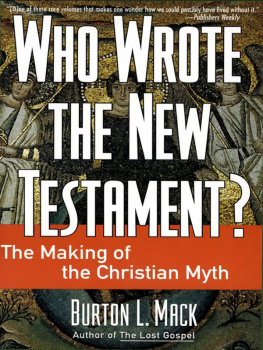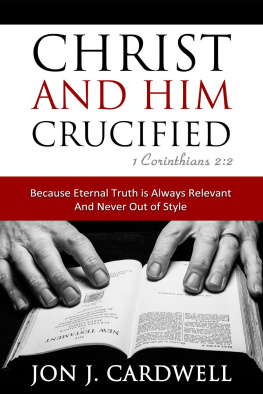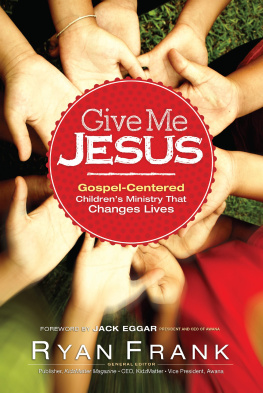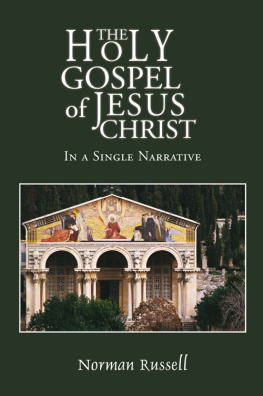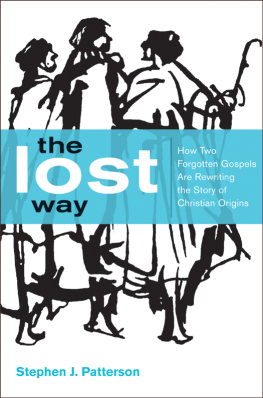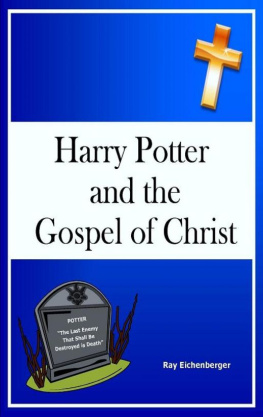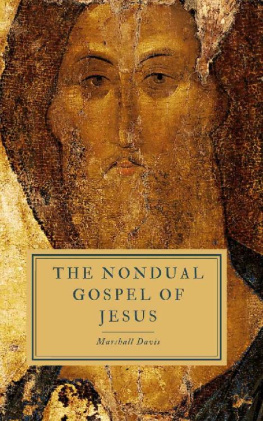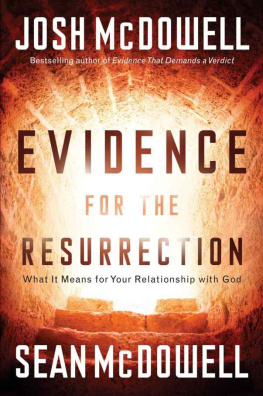Burton L. Mack - The Lost Gospel: The Book of Q and Christian Origins
Here you can read online Burton L. Mack - The Lost Gospel: The Book of Q and Christian Origins full text of the book (entire story) in english for free. Download pdf and epub, get meaning, cover and reviews about this ebook. year: 2013, publisher: HarperOne, genre: Religion. Description of the work, (preface) as well as reviews are available. Best literature library LitArk.com created for fans of good reading and offers a wide selection of genres:
Romance novel
Science fiction
Adventure
Detective
Science
History
Home and family
Prose
Art
Politics
Computer
Non-fiction
Religion
Business
Children
Humor
Choose a favorite category and find really read worthwhile books. Enjoy immersion in the world of imagination, feel the emotions of the characters or learn something new for yourself, make an fascinating discovery.
- Book:The Lost Gospel: The Book of Q and Christian Origins
- Author:
- Publisher:HarperOne
- Genre:
- Year:2013
- Rating:3 / 5
- Favourites:Add to favourites
- Your mark:
- 60
- 1
- 2
- 3
- 4
- 5
The Lost Gospel: The Book of Q and Christian Origins: summary, description and annotation
We offer to read an annotation, description, summary or preface (depends on what the author of the book "The Lost Gospel: The Book of Q and Christian Origins" wrote himself). If you haven't found the necessary information about the book — write in the comments, we will try to find it.
The first book to give the full account of the lost gospel of Jesus original followers, revealing him to be a Jewish Socrates who was mythologized into the New Testament Christ.
The Lost Gospel: The Book of Q and Christian Origins — read online for free the complete book (whole text) full work
Below is the text of the book, divided by pages. System saving the place of the last page read, allows you to conveniently read the book "The Lost Gospel: The Book of Q and Christian Origins" online for free, without having to search again every time where you left off. Put a bookmark, and you can go to the page where you finished reading at any time.
Font size:
Interval:
Bookmark:

The Book of Q
&
Christian Origins

in memory of
HANS CONZELMANN
a teacher of grace and truth
The Challenge
The Discovery of a Lost Gospel
Finding the Shards
An Uncommon Wisdom
Removing the Patina
Galilee Before the War
The Text of the Lost Gospel
The Book of Q
The Recovery of a Social Experiment
Dancing to the Pipes
Singing a Dirge
Claiming a Place
Coming to Terms
The Reconception of Christian Origins
Jesus and Authority
Mythmaking and the Christ
Bishops and the Bible
Christians and Their Myth
The Consequences
Early Christian Literature
Q Segments
O nce upon a time, before there were gospels of the kind familiar to readers of the New Testament, the first followers of Jesus wrote another kind of book. Instead of telling a dramatic story about Jesus life, their book contained only his teachings. They lived with these teachings ringing in their ears and thought of Jesus as the founder of their movement. But their focus was not on the person of Jesus or his life and destiny. They were engrossed with the social program that was called for by his teachings. Thus their book was not a gospel of the Christian kind, namely a narrative of the life of Jesus as the Christ. Rather it was a gospel of Jesus sayings, a sayings gospel. His first followers arranged these sayings in a way that offered instruction for living creatively in the midst of a most confusing time, and their book served them well as a handbook and guide for most of the first Christian century.
Then the book was lost. Perhaps the circumstances changed, or the people changed, or their memories and imagination of Jesus changed. In any case, the book was lost to history somewhere in the course of the late first century when stories of Jesus life began to be written and became the more popular form of charter document for early Christian circles.
It makes some difference whether the founder of a movement is remembered for his teachings, or for his deeds and destiny. For the first followers of Jesus, the importance of Jesus as the founder of their movement was directly related to the significance they attached to his teachings. What mattered most was the body of instructions that circulated in his name, what these teachings called for in terms of ideas, attitudes, and behavior, and the difference these instructions made in the lives of those who took them seriously. But as the Jesus movement spread, groups in different locations and changing circumstances began to think about the kind of life Jesus must have lived. Some began to think of him in the role of a sage, for instance, while others thought of him as a prophet, or even as an exorcist who had appeared to rid the world of its evils. This shift from interest in Jesus teachings to questions about Jesus person, authority, and social role eventually produced a host of different mythologies.
The mythology that is most familiar to Christians of today developed in groups that formed in northern Syria and Asia Minor. There Jesus death was first interpreted as a martyrdom and then embellished as a miraculous event of crucifixion and resurrection. This myth drew on hellenistic mythologies that told about the destiny of a divine being (or son of God). Thus these congregations quickly turned into a cult of the resurrected or transformed Jesus whom they now referred to as the Christ, or the Lord, as well as the Son of God. The congregations of the Christ, documented most clearly in the letters of Paul from the 50s, experienced a striking shift in orientation, away from the teachings of Jesus and toward the spirit of the Christ who had died and was raised from the dead. It was this myth that eventually made the narrative gospels possible.
Narrative gospels began to appear during the later part of the first century. Marks gospel was written during the 70s, Matthews during the 80s, Johns during the 90s, and Luke-Acts sometime early in the second century. These gospels combined features of the martyr myth from the Christ cult with traditions about Jesus as he had been remembered in the Jesus movements, thereby locating the significance of Jesus in the story of his deeds and destiny. Naturally, these gospels came to a climax in an account of his trial, crucifixion, and resurrection from the dead. They followed a plot that was first worked out by Mark during the 70s in the wake of the Roman-Jewish war. The plot collapsed the time between the events of Jesus life and the destruction of the Jerusalem temple which took place during the war. Mark achieved this plot by making connections between two sets of events (Jesus death and the temples destruction) that could only have been imagined after the war. His gospel appears to have been the earliest full-blown written composition along these lines, but once it was conceived, all of the narrative gospels used this same basic plot.
According to the story line of the narrative gospels, Jesus was destined to come into conflict with the rulers of the world because he appeared in the world as the very son of God. This conflict escalated to a climax in the crucifixion of Jesus as the Christ, but would only be finally resolved when Jesus as the resurrected son of God appeared at the end of time to judge the world and establish a new social order as the reign or kingdom of God. In the meantime, both the resurrection of Jesus and the destruction of the temple were thought to establish the truth of Gods great plan.
The first followers of Jesus could not have imagined, nor did they need, such a mythology to sustain them in their efforts to live according to his teachings. Their sayings gospel was quite sufficient for the Jesus movement as they understood it. Even after the narrative gospels became the rage, the sayings gospel was still intact. It was still being copied and read with interest by ever-widening circles. And it was available in slightly different versions in the several groups that continued to develop within the Jesus movement. Eventually, the narrative gospels prevailed as the preferred portrayal for Christians, and the sayings gospel finally was lost to the historical memory of the Christian church.
Were it not for the fact that two authors of narrative gospels incorporated sizable portions of the sayings gospel into their stories of Jesus life, the sayings gospel of the first followers of Jesus would have disappeared without a trace in the transitions taking place. We never would have known about the Jesus movements that flourished prior to the Christian church. But Matthew and Luke each had a copy of the sayings gospel, and the material each copied from it largely overlapped. It was this fortuitous coincidence that made it possible in recent times to recover the book, even though the sayings now sound like the pronouncements of the son of God instead of the teachings of Jesus.
No modern historian ever imagined that a sayings gospel had once existed, so no one went looking for it. Scholars discovered it inadvertently while poring over the gospels of the New Testament, wondering which had been written first. As they set the gospels side by side for comparison, they noticed two kinds of correspondence. One correspondence was that the story line in Matthew and Luke agreed only when it followed the gospel of Mark. This finding meant that Mark was the earliest narrative gospel and the source for the plot used by Matthew and Luke. But the other correspondence was also of interest. Matthew and Luke contained a large quantity of sayings material not found in Mark and much of this material was identical. This correspondence meant that Matthew and Luke had used a second written document in addition to the gospel of Mark. Scholars called this document Q as a shorthand for Quelle , which means source in German, for they first thought of it only as the common source for the sayings in the gospels of Matthew and Luke. But once Q was recognized as a source for these gospels, it could be studied on its own. And so the book of the first followers of Jesus has come to light after being lost for almost eighteen hundred years. In keeping with scholarly tradition, I call this lost gospel Q, for it has no other proper name.
Font size:
Interval:
Bookmark:
Similar books «The Lost Gospel: The Book of Q and Christian Origins»
Look at similar books to The Lost Gospel: The Book of Q and Christian Origins. We have selected literature similar in name and meaning in the hope of providing readers with more options to find new, interesting, not yet read works.
Discussion, reviews of the book The Lost Gospel: The Book of Q and Christian Origins and just readers' own opinions. Leave your comments, write what you think about the work, its meaning or the main characters. Specify what exactly you liked and what you didn't like, and why you think so.


